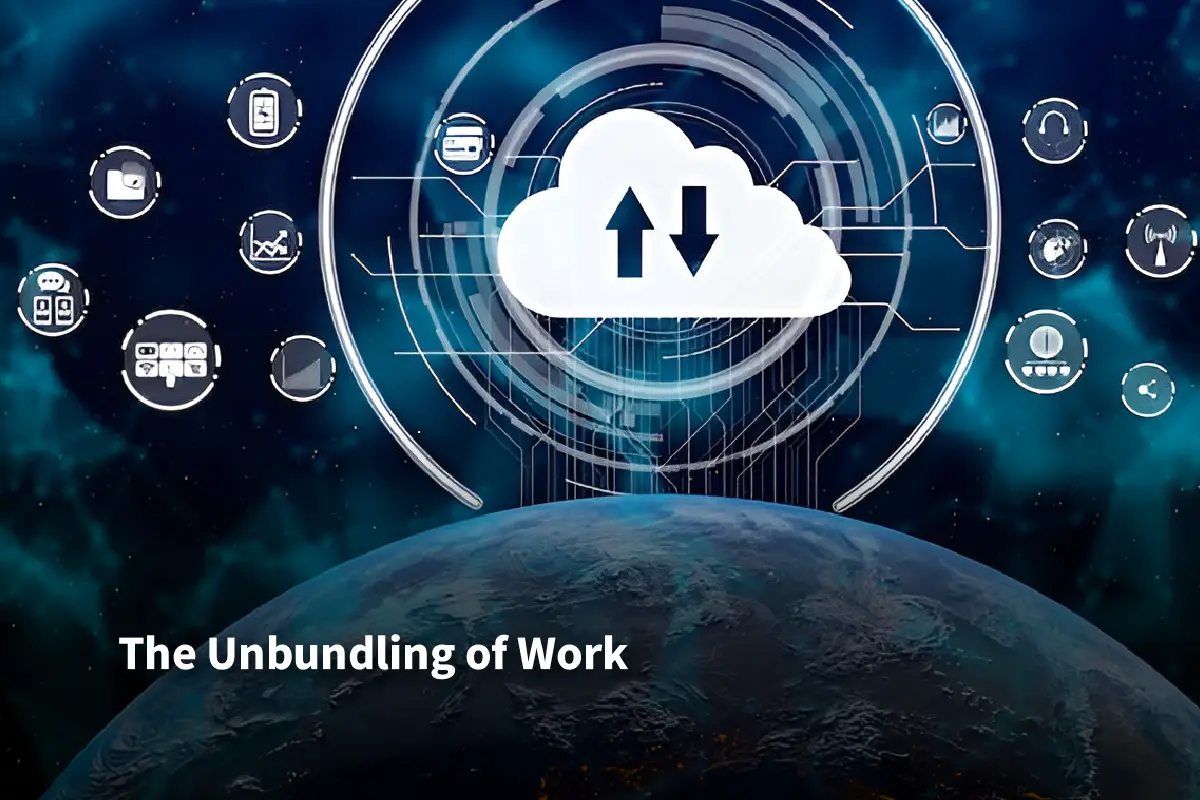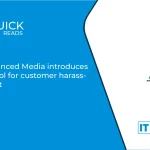For decades, the corporate landscape resembled a carefully constructed edifice. Organizations grow step by step. They begin with permanent hires, set hierarchies, designated office spaces, and clear career paths. HR often acted as both the architect and the bricklayer. Their focus was on stability and structure. Seismic shifts in technology, worker expectations, and global economics have shaken that foundation. The workplace is no longer just a place; it’s evolving into a dynamic, interconnected platform. And the workforce powering it? Increasingly, it’s modular. HR Tech leaders worldwide must grasp this shift. It’s not just a future goal; it’s a key strategy for today.
The Unbundling of Work

The forces driving this transformation are undeniable. Cloud computing, collaboration tools, and digital marketplaces have changed the game. They broke down geographical barriers. Now, remote work is not only possible but also often preferred. Generational changes made workers value flexibility, autonomy, and purpose. They now care less about the security of staying with one employer for life. The gig economy started with consumer services. Now, it has grown into a complex system for skilled workers. Nearly 38% of the U.S. workforce, around 64 million professionals, are freelancers, contributing over US$ 1.27 trillion to the economy in 2023. Globally, the gig economy accounts for about 12% of the labor force and generated US$ 455 billion in 2023, with projections showing continued growth at a 17% CAGR. Developers, marketers, data scientists, and strategists can offer their skills whenever needed.
This convergence means work is being fundamentally ‘unbundled.’ Tasks, projects, and complex roles aren’t just for full-time employees anymore. Now, they can involve freelancers and part-timers too. This change reflects a new way of working. Enterprises are now forming teams like advanced Lego sets. They blend their core internal talent with specialized external contributors. This includes freelancers, contractors, agency partners, crowdsourced experts, and AI-powered solutions. This is the modular workforce: it’s flexible and scalable. It focuses on skills and results, not just job titles.
Also Read: Why Japanese Carmakers Are Betting on Hydrogen Again: This Time with AI Efficiency
Why Modularity is Reshaping the Enterprise Core
The strategic advantages driving this shift are compelling. Agility stands paramount. In a fast-changing business world, quickly adjusting team sizes is key. It lets companies tap into specialized skills for projects. Also, it allows them to enter new markets without the costs of full-time staff. This flexibility gives a big competitive advantage. A global consumer goods company is launching a new product line in Southeast Asia. They can quickly create a cost-effective team instead of starting a new regional office.
This team includes three key members:
- A local marketing strategist from a talent platform.
- A contract supply chain expert who knows the area.
- Support from global brand managers and product developers.
Speed to market accelerates dramatically.
Cost optimization, often misconstrued as mere reduction, is about smarter allocation. Businesses are moving away from fixed labor costs like salaries and office space. Instead, they are focusing on variable costs that relate to project needs and results. This allows for investment in high-value strategic initiatives without permanent overhead bloat. Furthermore, the modular model grants unprecedented access to a global talent pool. Geographic limits disappear. This lets companies find the best talent no matter where they are located. They can solve specific challenges more easily. A Boston biotech startup can now quickly hire an AI researcher from Stockholm or a regulatory expert from Singapore. This will strengthen their core R&D efforts. Approximately 435 million gig workers worldwide are now reachable by organizations, with demand for online gig work growing 41% from 2016 to 2023.
The Indispensable Orchestration Layer
This complex, fluid ecosystem doesn’t function by magic. It demands robust, intelligent technology for discovery, engagement, management, and integration. HR Tech goes beyond its basic role. It becomes the core of the platform-based workplace. Talent marketplaces, both public and private, are the sourcing engines. Platforms such as Toptal, Upwork Enterprise, and niche hubs link businesses to skilled freelancers and agencies. They aren’t just for simple tasks anymore. Now, they provide access to executive-level interim leaders and specialized technical experts.
Workforce management platforms have evolved into sophisticated orchestration tools. SAP Fieldglass, Beeline, and new AI-driven platforms provide clear insight into the entire talent spectrum. This platform manages full-time employees, contingent workers, and service providers. It handles sourcing, onboarding, compliance, project assignments, performance tracking, and payments. This comprehensive solution provides a single, user-friendly interface for all these functions.
Strategic workforce planning and risk mitigation need a complete view. So, it’s crucial to integrate with core HRIS systems like Workday or SAP SuccessFactors. Seamless connections to project management software like Asana or Jira are also vital. They should also connect with communication tools like Slack or Teams and financial systems. APIs connect everything, but it’s important to focus on a smooth user experience. This matters for both managers and workers, no matter how they are employed. AI further supercharges this ecosystem. Machine learning algorithms connect project needs with the best talent profiles. They look at both internal and external pools. These algorithms predict skills gaps and spot top performers for future projects. They also automate compliance checks for different global regulations. The goal is frictionless talent flow.
Navigating the Human & Operational Complexities
Adopting a modular workforce strategy has its challenges. It requires a big change in how HR leaders think and act. Integrating diverse worker types cohesively presents a cultural hurdle. Creating a sense of belonging and teamwork among full-time employees, remote freelancers, and gig workers requires effort. Communication strategies should include everyone. Recognition programs need to acknowledge all contributors. Onboarding for external talent should be as effective as it is for internal hires. This helps boost productivity quickly. Leaders must champion a culture where contribution, not contract type, defines value.
Compliance and risk management become exponentially more complex. Managing global labor laws, tax rules, worker classification, data security, and intellectual property rights is tough. Misclassifying workers in ride-sharing and delivery services can hurt finances and reputation. We need strong HR Tech solutions for managing contingent workers and compliance. However, human oversight is still essential.
Performance management also needs reinvention. Traditional annual reviews are ill-suited for project-based contributors. We should focus on outcome-based metrics, feedback loops, and clear project evaluations. Trust and psychological safety are crucial for innovation and success in temporary teams. HR leaders must tackle friction between internal staff and external talent. They must promote fairness and lessen job insecurity tied to the modular model.
Actionable Imperatives for HR Tech Leaders
HR Tech leaders should go beyond just using tools. They need to be strategic architects of the platform workplace.
- Embrace the Ecosystem Mindset: Shift from managing ’employees’ to orchestrating ‘talent.’ Develop a comprehensive workforce strategy that explicitly includes and values the modular component. Identify key skills needed now and in the future. Then, determine which skills to source internally, externally, or through automation.
- Invest in Integration Intelligence: Select tech that connects easily. It should provide a complete view of your workforce. Share data easily between talent marketplaces, VMS, HRIS, project tools, and finance systems. AI-powered analytics for workforce insights are no longer optional.
- Champion the Human Experience: Design people practices for the entire talent ecosystem.
- Create inclusive onboarding for contingent workers.
- Develop flexible recognition programs.
- Ensure equal access to information and tools.
- Foster community-building initiatives that connect different employment types.
Prioritize clear communication channels for all.
- Become Compliance Experts: Learn global workforce rules or partner with legal and tax pros. Leverage technology to automate compliance checks and classification guidance, but maintain rigorous oversight. Build relationships with specialized Managed Service Providers (MSPs). This is important for scale and complexity.
- Redefine Leadership Development: Equip managers with the skills to lead blended teams effectively. This means leading from a distance. Set clear goals. Make sure everyone feels safe at work. Quickly build trust with temporary team members.
- Partner Proactively: Move beyond transactional relationships with vendors. Work together with talent platform providers, workforce management vendors, and MSPs. Create solutions that fit your organization’s specific needs and risks.
The Future is Modular, Integrated, and Human-Centric

The shift to a dynamic talent platform in the workplace isn’t just a trend. It’s a key part of how modern businesses operate. The modular workforce drives agility, sparks innovation, and offers global access. HR Tech leaders must take charge. They need to master this complex ecosystem. This needs strong leadership, tech skills, and a focus on the human experience for all workers. It also requires being proactive about risk and compliance.
Successful companies will use HR technology to manage change. They will also optimize it. This way, they can create flexible and strong organizations. Here, top talent can connect easily, no matter where they come from, to achieve great results. The workplace platform is live. It’s time to architect the future of work upon it. The agility, innovation, and competitive advantage of your enterprise depend on it.







